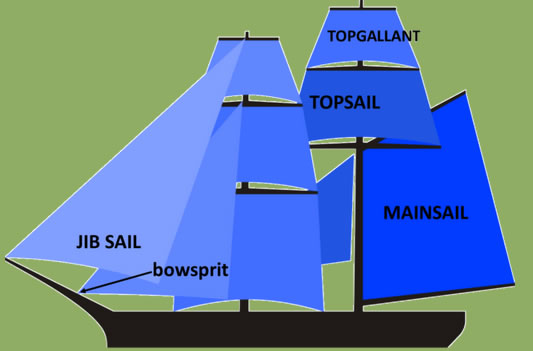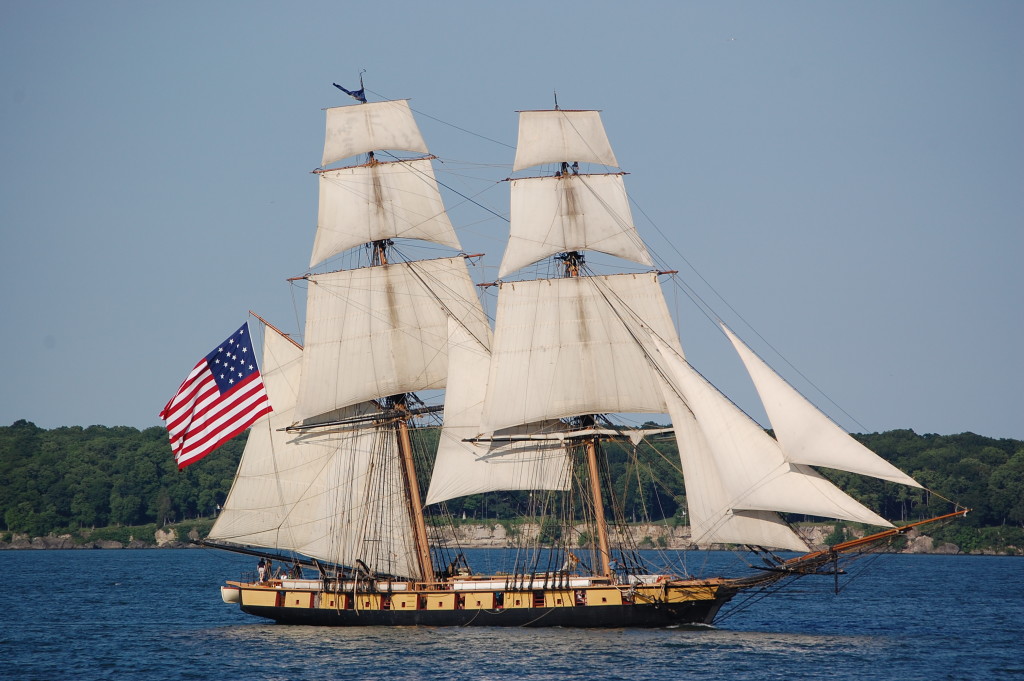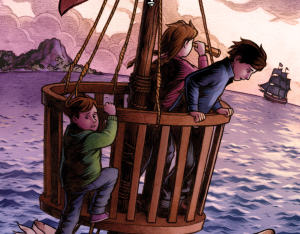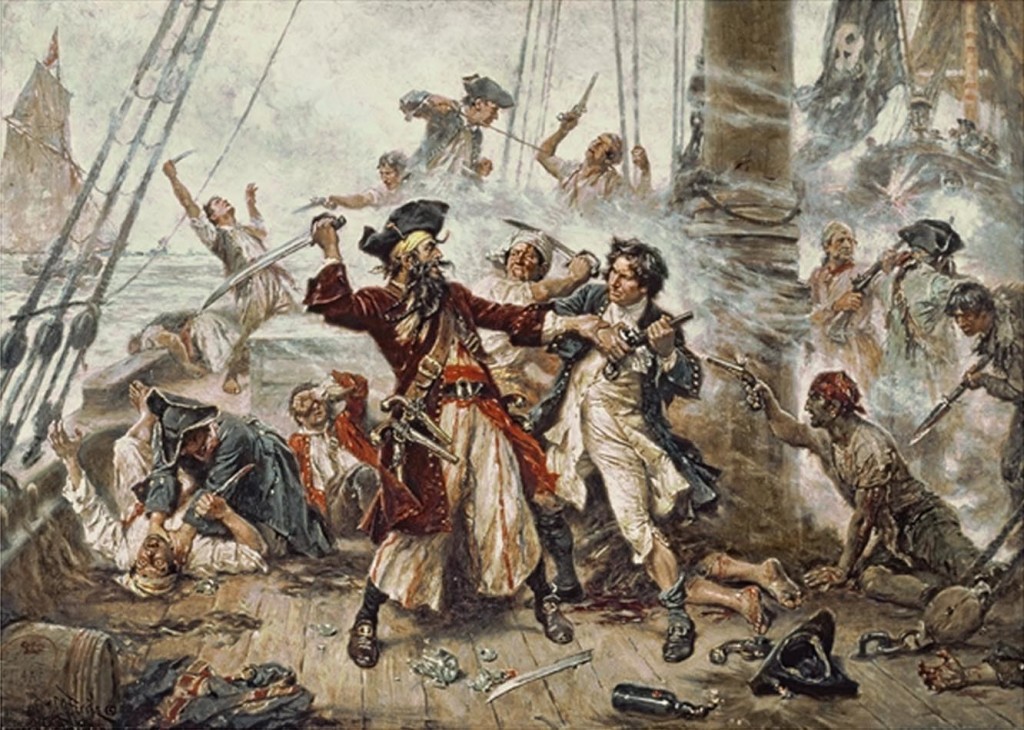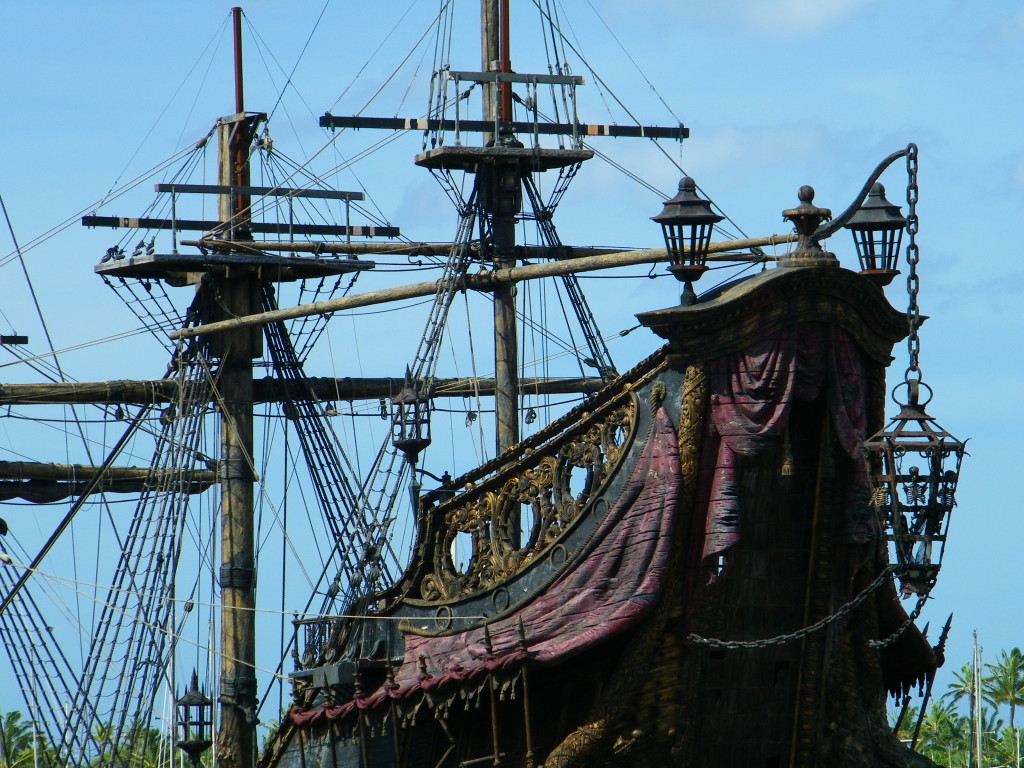A band of pirates generally sailed in a small, nimble ship that could easily outmaneuver the authorities who chased them—that is, until they captured a bigger, faster ship. Brigantines were common pirate sailing ships, which is why I chose the brigantine as the vessel in The Wand & the Sea.
A brigantine—or brig—is a two-masted ship with several sails. The mast toward the front, or bow, of the ship is called the foremast. It includes one or more square-rigged sails. The mast near the rear, or stern, is called the mainmast. Emerging like a long nose from the bow is the bowsprit, where a small, triangular jib sail is rigged.

Here’s a common sail plan (composition and setting of sails) in a typical brigantine ship.
Ships like the one in The Wand & the Sea had several decks. The main deck stretches along the bulk of the ship, from the narrow stern and bow through the ship’s waist (or center). At either end, there may be one or more raised decks. The forecastle (pronounced FOKE-sill) is a small deck raised up a few steps at the bow. In the stern, another raised deck called the poop deck is where the ship’s helm is located. It’s also home to the captain’s cabin. Unlike the crew, the captain sleeps in a cabin that extends out the back of the ship and is above the lower decks. Often pirates stripped out fussy details like forecastles, stern cabins, and poop decks to create a faster, smoother fighting vessel.
The brigantine USS Niagara, which fought in the War of 1812, is still operational and used for naval training exercises. Learn more about the Niagara here.
Climb down one of the hatches (like trap doors) to reach the lower decks. Here you’ll find the crew’s cabins and storage for food, fresh water, weapons, and repair supplies in case the ship is damaged in a storm or a battle.
The brig is the ship’s jail. It’s located in the belly of the ship, which is smelly, dank, and often inhabited by rats. Nearby is a pump used to clear the bilge water, which is the foul water that collects below the water line. The bilge water has to be periodically bailed or pumped to keep it from accumulating and sinking the ship. Pumping the bilge is one of the worst duties on board ship.
Abovedecks, the rigging are the many lines and ropes that anchor the ship’s sails and control their movement. Ratlines are used to climb to the crow’s nest, which is a lookout point near the topmost part of the mast.
In the year 1717, during the Golden Age of Piracy, one of the most notorious pirate captains ever known was Blackbeard (whose real name was Edward Teach). Blackbeard captured a French slave ship off the coast of Martinique and made it his flagship, renaming it the Queen Anne’s Revenge.
Blackbeard lost the Queen Anne near North Carolina less than a year later, after a daring run through the Caribbean, where he seized ships, gold, and prisoners that he forced to work on his ships. The ship lay sunken beneath the waves for more than 200 years before archaeologists discovered it. Today the ship’s artifacts are being carefully restored. You can read all about Blackbeard and the Queen Anne’s Revenge on the ship’s website here.
A replica of the ship was used in several of the Pirates of the Caribbean films, standing in for Jack Sparrow’s Black Pearl and other ships as well. Today the replica is permanently docked in Kolopei, Hawaii. More photos of the replica can be found here.
Back to the main Pirate Lore page
brigantine sail plan: public domain; labels by Claire M. Caterer; USS Niagara: Lance Woodworth/wikimedia commons; used by permission under this Creative Commons license.; illustration for The Wand & the Sea by Karl Kwasny; “Capture of the Pirate Blackbeard”: Public domain via Wikimedia Commons.; The Queen Anne’s Revenge: by Joel via Flickr; used by permission under this Creative Commons license.










